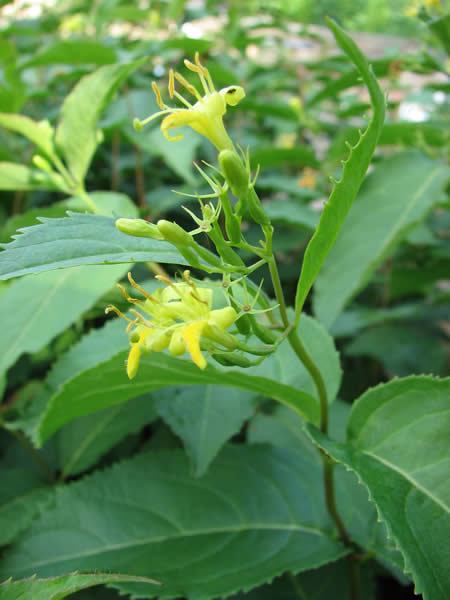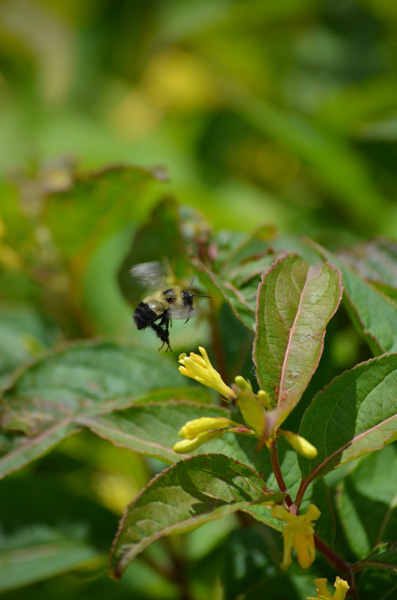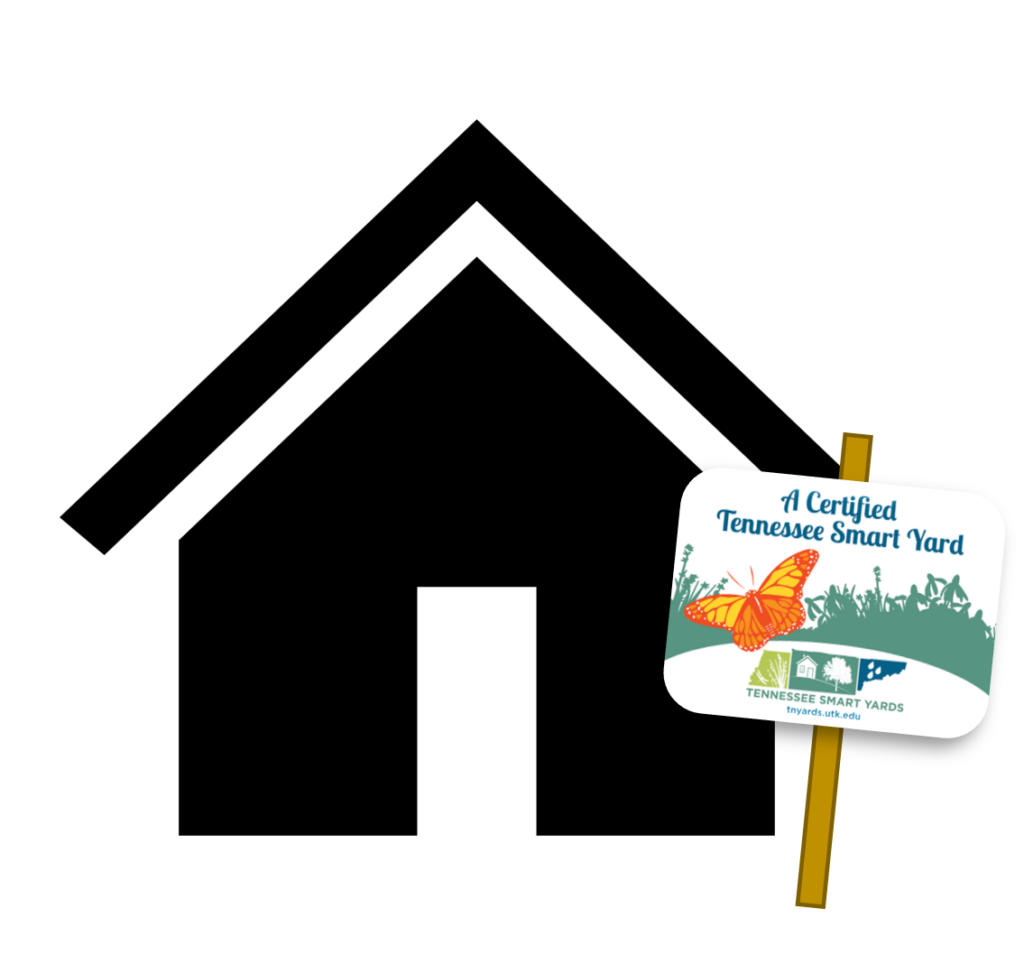
Common Name: Northern Bush Honeysuckle, Dwarf Bush Honeysuckle
Full sun to light shade; medium to dry moisture level; tolerant of a wide range of soils including coarse sands, gravels, loamy sands, sandy loams to fine silty clay loams, sandy clay loams and heavy clays; slightly acid pH.
2-4 feet height by 2-5 feet spread; blooms in summer, yellow flowers fading to red; fruits are dry, long-pointed, beaked capsules.
Growth Rate: Fast. Suckers freely.
Maintenance: Free of pests and diseases; easy to grow.
Propagation: Seed germination codes C(90), D. Easy from cuttings, root cuttings and seed.
Native Region: Occurs in 8 counties: Cheatham, Marion, Hamilton, Meigs, Roane, Anderson, Polk and Johnson
Designated a “Threatened Species” in Tennessee. A great, low-maintenance plant for difficult situations, rugged and long-blooming. Good for bank stabilization. On rich, moist soil it spreads more aggressively and is better planted in fairly dry soil where it will be more restrained. Will grow in fairly heavy shade but loses all its ornamental qualities. Not quite as vigorous as Southern Bush Honeysuckle. Attracts hummingbirds, butterflies and bees.
Note: Do not confuse this choice native shrub with the wild honeysuckle bush, Lonicera tartarica, or the Japanese honeysuckle vine, both of which are invasive exotics.

